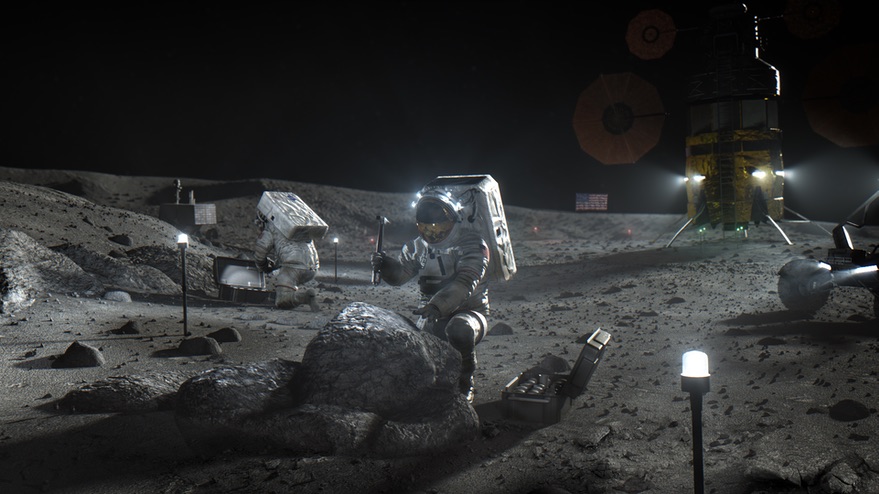WASHINGTON — NASA is seeking ideas from scientists on the research astronauts could carry out on the first Artemis lunar landing mission in 2024.
NASA announced Aug. 21 it seeking brief white papers on the science the astronauts on the Artemis 3 mission can carry out. The papers, no more than two pages long, are due to the agency by Sept. 8.
The papers will support work by a science definition team in NASA’s Science Mission Directorate to develop science objectives for the Artemis 3 mission. That team will also use a number of other resources, ranging from the planetary science decadal survey to a “roadmap” for lunar science created by an advisory group, the Lunar Exploration Analysis Group.
“We want to make sure we have the science ready to go,” Lori Glaze, director of NASA’s planetary science division, said at an Aug. 17 meeting of NASA’s Planetary Science Advisory Committee. That includes making sure the astronauts are trained on the science and are equipped with the right tools and instruments. “They’ll have what they need in order to do science on the surface.”
The science objectives, she said, will feed into the overall objectives for the Artemis 3 mission being developed by the Human Exploration and Operations Mission Directorate. “We want to have participation” into that effort, she said, “making sure we have the science input.”
What capabilities that will be available to scientists on Artemis 3 are not yet clear, but are likely to be limited, at least compared to plans for later missions. While NASA is studying concepts for an unpressurized rover and the Japanese space agency JAXA has announced its intent to develop a pressurized rover, the NASA announcement for the white papers says the two astronauts on Artemis 3 will perform “multiple walking excursions” at its landing site near the moon’s south pole but makes no mention of a rover.
During those lunar excursions, astronauts will collect lunar rock and regolith samples and use cameras and other instruments, including both those operated by the astronauts themselves and those deployed on the surface, potentially for operation after the astronauts depart.
The call for white papers doesn’t seek information on instruments or related technologies, but NASA is already studying what is needed. “We’re trying to figure out what instrumentation is going to be needed,” said Brad Bailey, a program scientist in the agency’s Exploration Science Strategy and Integration Office, later in the meeting. That ranges from handheld instruments to those that can be bolted to the side of the lander.
Some instruments and other equipment, he said, could be delivered in advance on robotic landers, such as through NASA’s Commercial Lunar Payload Services program.
One open issue is how many samples the Artemis 3 and later missions will be able to return to Earth. The call for proposals for the Human Landing System program last fall set a minimum mass of returned samples of just 35 kilograms, including the mass of the sample containers. Agency officials said then that the goal was to return 100 kilograms, but that the rush to get back to the moon by 2024 placed restrictions on what could be done on at least that initial landing mission. That raised concern among scientists who continue to study the samples returned by the Apollo missions a half-century ago but are eager to get new samples.
Returning as many samples as possible remains a priority, Bailey said. “Sample science is definitely core and central to everything we’re planning on doing moving forward,” he said. “One of our chief goals is to bring back samples, and lots of them. You can’t have enough samples.”
